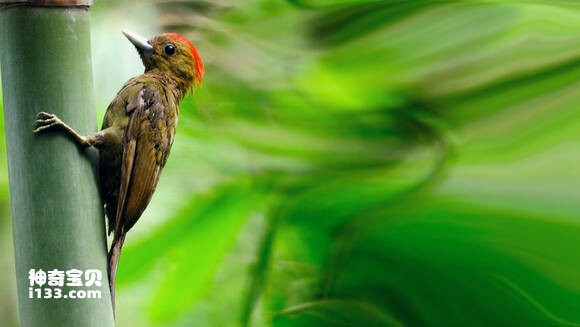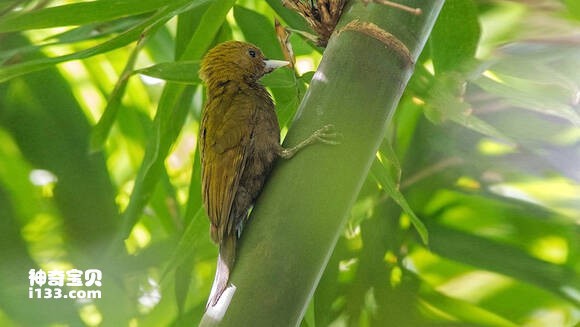Gecinulus viridis
IUCN
LCBasic Information
Scientific classification
- name:Gecinulus viridis
- Scientific Name:Gecinulus viridis,Bamboo woodpecker
- Outline:Climbing birds
- Family:
Vital signs
- length:23-25 centimeters
- Weight:About 76g
- lifetime:There are currently no research materials available
Feature
Distribution and Habitat
The bamboo woodpecker is distributed in western and southern Yunnan, Guangdong, and Fujian within China; Distributed outside of China in India, Nepal, Myanmar, Thailand, Bangladesh, Bhutan, Laos, and Vietnam.
The bamboo woodpecker mainly inhabits low mountain bamboo forests below an altitude of 1000 meters or mixed forests, shrubs, and secondary forests with mixed bamboo forests.
Appearance
The male of the bamboo woodpecker has a pale yellow or golden olive brown skin on the forehead, around the eyes, at the front of the eyes, at the base of the bill, and on the cheeks. The neck, pillow, and back of the neck are olive yellow, and there is a large pink or bright red patch on the top of the head. The remaining upper body is chestnut red or light yellow olive green. The two wings are black brown, and the primary feathers have discontinuous brown yellow or skin yellow horizontal spots. The inner edge of the feather is red, gradually increasing towards the inner red part, and the secondary feathers are completely the same color as the back. The tail is dark brown, with brown horizontal spots at the base, and the outer feather margin is chestnut red or red. Or the tail is reddish brown, with 5 light chestnut horizontal spots. The chin and throat are light olive green, while the rest of the lower body is dark olive green or olive brown. The female bird is similar to the male bir
Details
The scientific name of the bamboo woodpecker is Gecinulus viridis, and its foreign name is Bamboo woodpecker. It has four subspecies.

The bamboo woodpecker is a resident bird that moves alone or in pairs. It is timid in nature and often moves and feeds on tree trunks and bamboo. It also often feeds on fallen trees on the ground. Mainly feeds on ants and insects. The call was very noisy, constantly repeating the nasal contact call "chaik chaik chaik", and the rough and hoarse "chereker chereker chereker" screamed like a crow.

The breeding period of bamboo woodpeckers is from April to July. Nesting in tree holes, nests are often found in broad-leaved forests and secondary forests mixed with bamboo, as well as in trees near farmland. Nests often choose to stand on dead and decaying tree trunks. The nest hole is usually 1.5-6 meters above the ground. Each litter lays 3 eggs. Egg white, with a size of 22-28 x 18-20 millimeters and an average of 25-19 millimeters.

The bamboo woodpecker has been included in the 2012 IUCN Red List of Threatened Species ver 3.1- Least Concern (LC).
The bamboo woodpecker has been included in the list of beneficial or economically and scientifically important terrestrial wild animals under national protection released by the State Forestry Administration of China on August 1, 2000.
Protect wild animals and eliminate wild game.
Maintaining ecological balance is everyone's responsibility!








